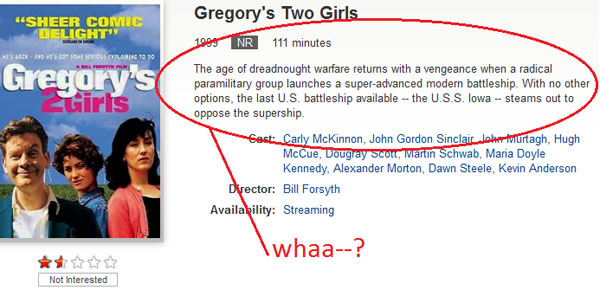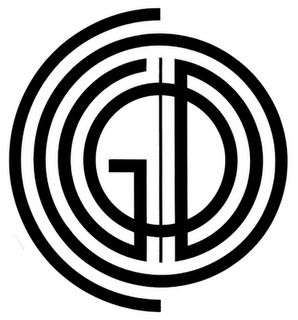
Day: November 2, 2011
more woe from the P.I.
Am being kidded now about using the term "the public internet" but it was already meant to be a joke. Google used it when announcing its "net neutrality" compromise with AT&T, who have long been salivating to privatize online traffic. We weren't supposed to admit there are two nets, one open and one proprietary, and here was a supposedly paradigm-shifting new media company conceding the point. Now Google has its own sign-in-required private network to compete with the other friend farms. Collectively the new AOLs comprise one internet, the cable companies will have their online streaming internet, and what meager bandwidth remains will be committed to solo bloggers and spam.
In a recent email discussion about the term "post-internet" yrs truly wrote:
I agree there is a morphing of practices going on [between the internet and physical gallery spaces] that deserves further study but feel that (i) we don't need a new art term, and (ii) it is hubristic to describe your moment as "after" something as vast, multivalent, and obdurate as the
internet. It's almost like saying you are "post-shoes" while still actually wearing them.
Am reconsidering this in light of commercial social media's triumph in defining online experience. It's harder to describe the net as vast when it's corralled into a few large, regimented nodes based on juvenile crowd control techniques (friends, likes, "in a relationship," etc). I see former blogospheric indies on G+ engaging in endless rounds of high-fivin' and base-touchin' and think that's something we could definitely be "post-".
Bulletin boards, group blogs, etc still offer the best vehicles for info exchange and even socializing. Will never get why those needed to scale up to the size where your former elementary school classmates were chiming in on the discussions.
TELEFONE SEM FIO

Some info about a show I am in, opening this Friday, Nov. 4 at Elizabeth Foundation for the Arts (323 W. 39th, NYC):
TELEFONE SEM FIO: Word-Things of Augusto de Campos Revisited
November 4 - December 17, 2011
Opening Reception, Friday, November 4, 6- 9 pmA collaboration between Telephone and EFA Project Space
with Ugly Duckling PressePoets: Jean-Sébastien Baillat, Jen Bervin, Ray Bianchi, Macgregor Card, Nico Pam Dick, Kenneth Goldsmith, Thessia Machado, Benjamin Moreno, Charles Perrone, Steve Savage, and Edwin Torres.
Artists: Angela Lain & Rafael Detanico, Bibi Calderaro, Deric Carner, Brendan Fernandes, Rossana Martinez, Tom Moody, Trong Gia Nguyen, Jennifer Schmidt, Dannielle Tegeder, and Andrea Van Der Straeten.
Curated by: Sharmila Cohen and Paul Legault for Telephone; Michelle Levy for EFA Project Space
Telephone is pairing with The Elizabeth Foundation of the Arts to present a unique venture inspired by Brazilian concrete poet, Augusto de Campos.
Opening November 4th, the exhibition and corresponding publication “Telefone Sem Fio: Word-Things of Augusto de Campos Revisited” uses de Campos’s work as catalyst for a multi-disciplinary exercise in which a group of artists and poets have been invited to create “translations” in their own language and medium.
The Fall 2011 issue of Telephone will be concurrent with the exhibition, and the exhibition will be modeled after the journal. This issue, which will be published in collaboration with Ugly Duckling Presse, will double as an exhibition catalog. A web version, which contains sound and time-based components will exist on the Telephone website.
Augusto de Campos is a poet, translator, music critic, and visual artist whose work emphasizes the direct connections between language, sound, and image. He was one of the originators of the Brazilian concrete poetry movement that began in the 1950s and continues to influence the work of musicians, visual artists, and writers today.
De Campos began working in the 1950s with his brother Haroldo and fellow poet Decio Pignatari to promote concrete poetry, which they defined as a “tension of thing-words in space-time.” They sought to reduce language to its essential components of letters and sounds in an attempt to re-create a language that blurs the sensory lines of speech, sight, and sound with time. The Brazilian sector of the concrete poetry movement is uniquely characterized by the “verbivocovisual,” a term from James Joyce’s Finnegan’s Wake. Bringing to mind the combined sensory episodes experienced by synaesthetes, de Campos pushed boundaries of traditional text usage by introducing light, color, aesthetic arrangement of letters and words, sound and animation. Decades later much of de Campos’ work and influence is only known obscurely in the U.S
The poets and artists invited to invent translations of de Campos exist across a continuum of text, sound, and visual expression. They were asked: How do we look at such text/objects now? How do we enable this strange case of spatial and temporal translation—from Brazil to the U.S. and from the mid 20th century to the 21st century? How can we re-inject the heart of the original sentiment and intention into our current context?
The hybrid nature of de Campos’s work has naturally elicited hybrid responses and many of the artists have made concerted efforts to physically interact with the content and literally reanimate it. Brendan Fernandes translates the original SOS animation into a Morse code pattern across the gallery floor that suggests a choreography for how viewers move through the space; Andrea van der Straeten interprets the same poem through sign language and an installation of cast shadow effected by a gentle breeze; Dannielle Tegeder sends the viewer on ‘scavenger hunts’ through New York Public Library Archives, requiring that one locate an authentic De Campos publication in order to retrieve his or her inserted original work on paper response; Brazilian artist team Angela Detanico and Rafael Lain revisit Pulsar, a pivotal animation and sound piece, to create the Flash animation “Amplitude” which uses a numeric formula to rewrite the poem in a language of concentric circles.
Many of the poets took this opportunity to push the boundaries of their genre by producing works which--like Kenneth Goldsmith’s digital maps--explore how the “concrete” can be incorporated into conversations happening currently around conceptual writing and translation; Jen Bervin refashioned de Campos’s impossible/verbal city, “cidade, city, cite” in silver paper; Steve Savage and Benjamin Moreno produced interactive works which literally require the space--albeit a digital one--in order for the user to “read” them. These are not standard poems. The contributions are as varied as the means of translation itself.
In its first year of publication, Telephone has become a respected voice in the poetry community. It features four to five poems from one foreign poet in each issue, which are then translated roughly ten times by multiple different poets and translators. There are no rules about how each poem should be translated. The first two issues focused on the work of Ulijana Wolf as well as a collaboration betwen Steve Savage & Renée Gagnon; the third will focus on Augusto de Campos. In this short time, the publication has been featured in Harper’s Magazine and BOMB. Its new incarnation as Telephone Books is set to launch in Fall 2012.
EFA Project Space focuses on exhibits and programs that explore various aspects of the creative process with a goal of inspiring new bonds in the diverse creative community. We collaborate with organizations, curators and artists to provide a comprehensive and critical perspective on creative practices. EFA Project Space is a program of the Elizabeth Foundation for the Arts, a 501 (c) 3 non-profit organization committed to providing artists across all disciplines with space, tools and a cooperative forum for the development of individual practice. EFA Project Space receives partial funding from the EFA, from the New York City Department of Cultural Affairs, and from the Lily Auchincloss Foundation.
UbuWeb on Augusto de Campos. Am excited to be involved in a project with UbuWeb honcho Kenneth Goldsmith (aka WFMU's Kenny G).
